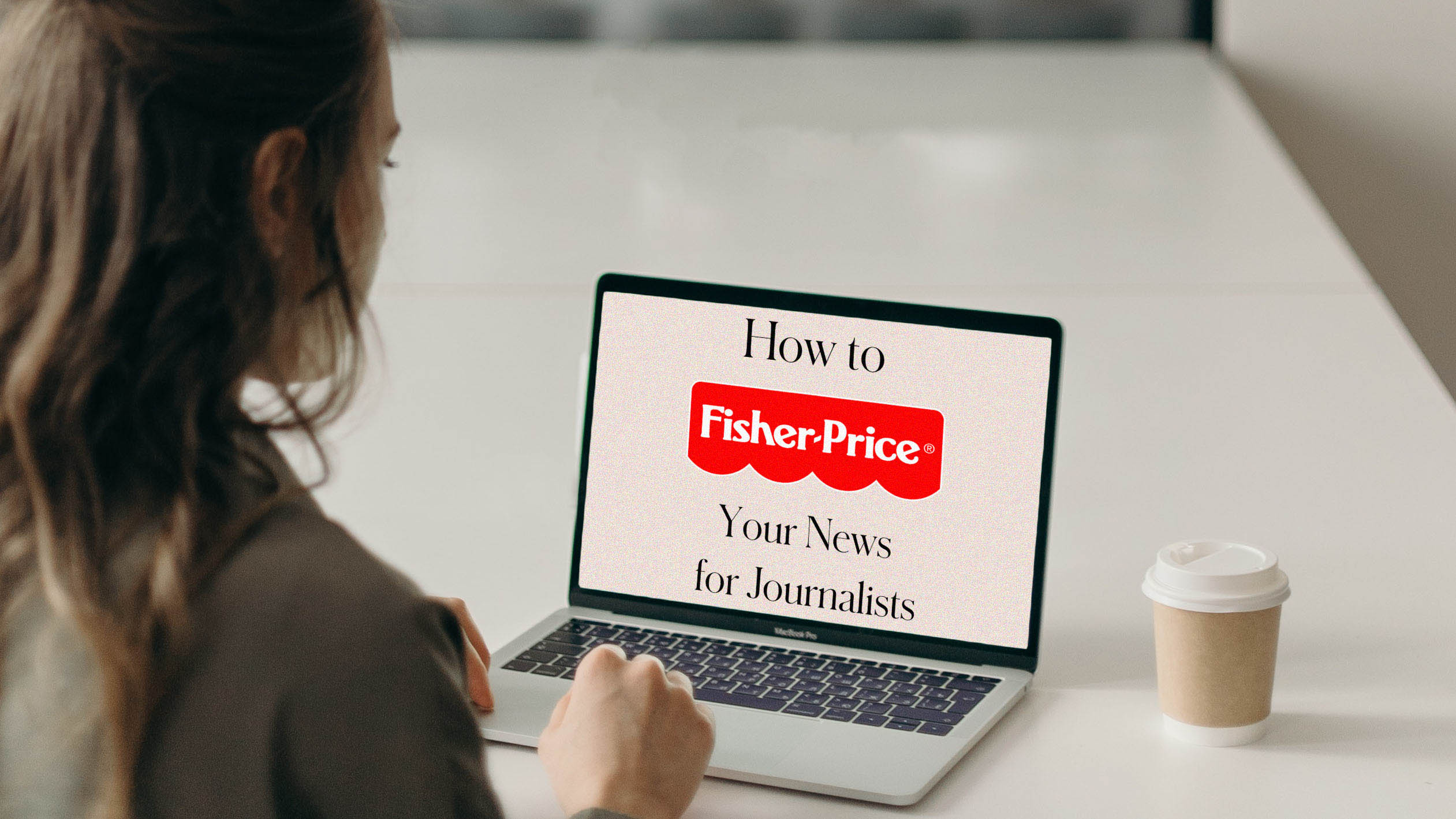4 Sure-Fire Ways to Make Your Pitches Irresistible
Journalists receive hundreds of pitches daily from publicists eager to tell them about clients, launches, or things they deem newsy. Those pitches can run the gamut from oddly inappropriate, to blessedly on-target, to a whole lot of WTF did I just read?
So, what makes a journalist take the time to read your pitch, much less decide the information is worth sharing with their readers? For one thing, a really great pitch never leaves you guessing. From the subject line to the introduction to the description, all elements shared should fit perfectly together- which come to think of it is a lot like classic Fisher-Price toys.
While there’s nothing juvenile about the PR and journalist relationship, sometimes it helps to go back to the basics.
If you’re trying to make your own pitches stand out from the scrum, consider adding a bit of Fisher-Price inspiration to your approach.
Make it easy to understand.
Fisher-Price toys may have been developed by developmental specialists and engineers, but every single colorful element seems effortless. More than that, they make sense, fit seamlessly with each other and offer a bit of fun in the process before hitting the payoff. And that offers a lot of inspiration for publicists hoping to up their own game.
Before sharing your latest pitches, check for clarity with someone who knows nothing about your product or client. Your pitch shouldn’t be like the New York Times crossword puzzle, taking endless minutes to solve, it has to naturally flow from one piece to the next.
PR pro tips: Reread your pitch from the journalist’s point of view before hitting send.
There is nothing worse than receiving a pitch and having no idea of what you’re being pitched. As a publicist, you may have a clear idea of what you think you’re saying, but it might not make sense to anyone outside of your agency. By making your pitch easy to understand and navigate, you increase your chances of your entire pitch being read. And while you’re at it, you probably still need to cut things down to make it clear and bite-sized.
Don’t make the reader have to plow through endless information for a payoff. And don’t make it so confusing that they give up in the middle. Let your reader know who your client is, why this pitch is relevant or timely.
Unlike a Fisher-Price toy, a PR pitch shouldn’t feel like a guessing game.
Make it timely.
Part of the genius of Fisher-Price is the way every toy is geared to a specific age group. Not sure if this is the game for your tot? Read the label and you’ll immediately know if it’s a good fit.
PR pro tips: Make your pitch newsy and timely whenever possible. Just because you’re working with a new client does not mean that it’s relevant or interesting to a journalist. If you can’t find an angle that works exclusively with their beat, find one that works with current events. But since the news cycle moves so quickly, you’ll have to be prepared to hit send quickly to stay relevant.
Do the heavy lifting behind the scenes.
One of the reasons for Fisher-Price’s great success is that they track the many moving parts behind the science of fun. Sure, they create products to dovetail with a baby’s growth and development, but there’s always a deep thought process behind what seems incredibly simple. They also laser focus on who they’re targeting and why and literally build ease of use into the process.
A huge challenge for journalists is keeping editors happy by writing stories that are clickable and organically shareable. As a publicist, you can help by crafting your pitch in a way that shows you’ve not only researched the writer’s outlets or potential angles, but also the way their content is shared or consumed.
PR pro tips:
There’s a fine line between seeming to write the article for a journalist (don’t do that) and offering bite-sized blocks of information, comparisons, or data points illustrating why your pitch matters. Remember, before you can connect with a writer’s outlet, you have to connect with them first. And in case anyone needs reminding, PR stands for public relations.
Creating and maintaining relationships with journalists is a huge part of the job, and providing consistently good leads often makes you a partner in their process.
Don’t build in too many moving parts.
Part of the genius of Fisher-Price toys is that they somehow know just how many block pieces to include before the puzzle is solved. More than that, they create experiences that override frustration for a feeling of satisfaction.
Along those lines, if you fill a pitch with so much useless information that a journalist has to dig around to find basic facts, they’ll simply skip to the next pitch. And they might just avoid your future pitches. Always give a writer the easiest possible way to cover your news.
PR pro tips: Before you spend that extra time pasting images into a PDF, ask yourself if that’s helpful to the journalist your pitching? Instead, offer a quick clickable link with a small image and then offer a high resolution image if requested. In other words, always provide journalists with the easiest possible way for them to cover your news. Segal Communications founder Sarah Segal said she and the team “always put the text of a press release into the body of the email and never as an attachment so that reporters can easily search it and don’t have to open anything.”


